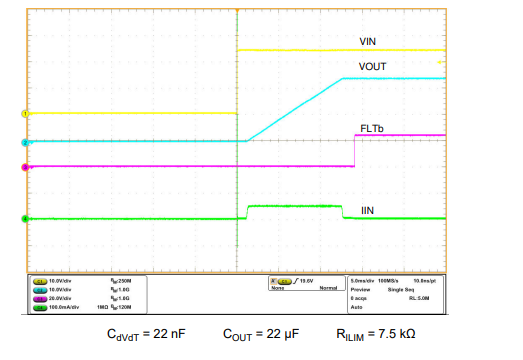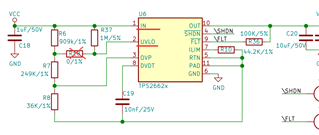our customer used 24V as our product 's power input, normally it works fine. However, recently, one of our products was damaged according to our customer. we find out it is TPS26625 chip that was damaged in our product. so we want to figure it out why. below is our analyse of that damaged TPS26625 chip.
is there any possibility to cauese this?
1.the damaged chip 's voltage value of each pin when power on.
| eFuse Pin | Voltage(V) |
| 1、VCC | 5 |
| 2、Net-(R18-pad2) | 3.9 |
| 3、Net-(R7-pad2) | 0.15 |
| 4、SHDN | 2.47 |
| 5、Net-(C19-pad2) | 0 |
| 6、GND | \ |
| 7、Net-(R10-pad2) | 0 |
| 8、Net-(C19-pad2) | 3.98 |
| 9、FLT | 0 |
| 10、VDD | 3.22 |
2. I read from the manual that the efuse voltage max is 62V. Excuse me, the instantaneous high voltage (greater than 62V, such as static electricity) should not burn the chip, right? Only a constant voltage input exceeding 62V will burn out the chip.




